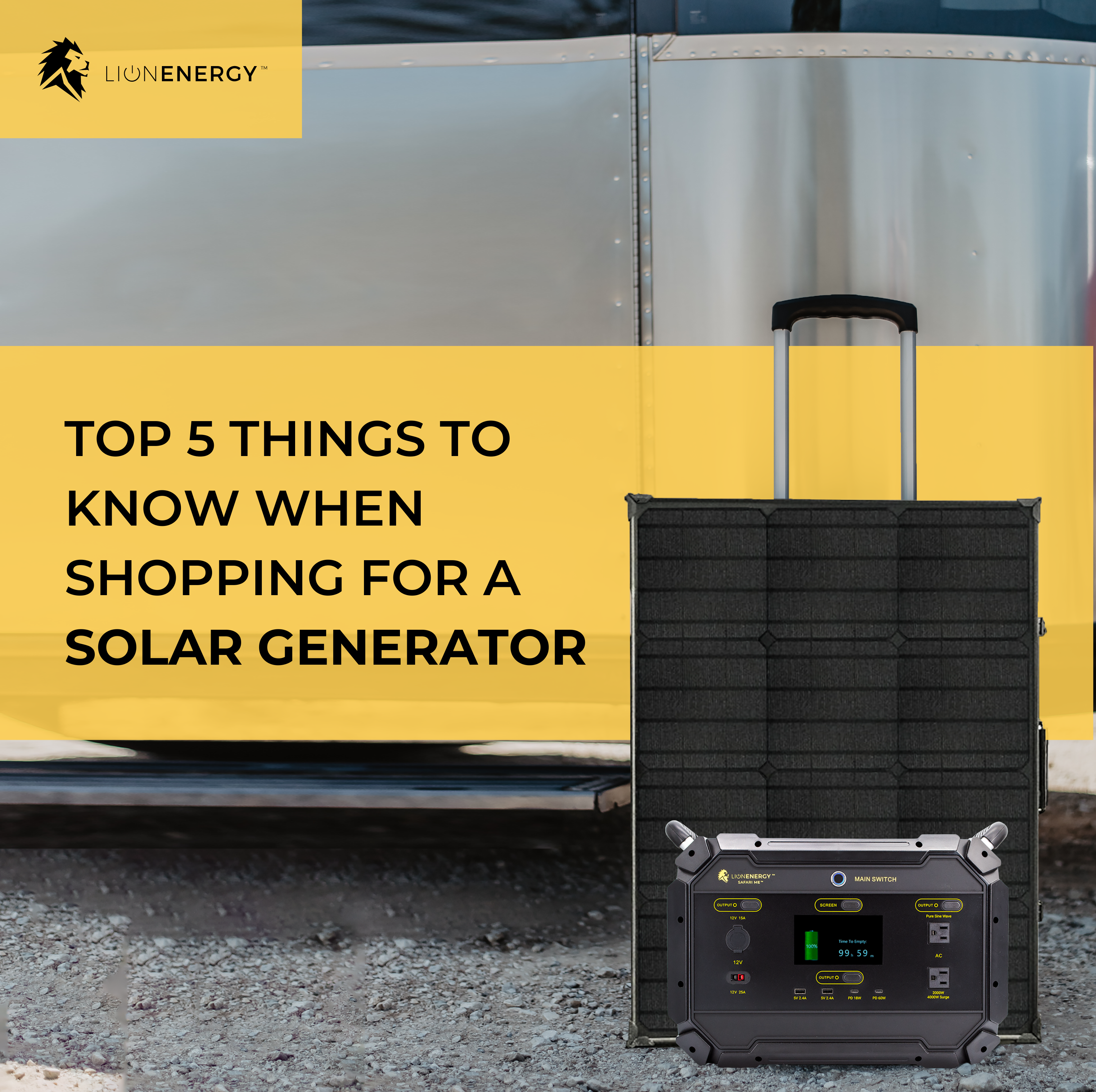Buying a solar generator can feel intimidating. There are many brands with many features – and often unfamiliar terminology. Solar generators are usually bigger ticket items, so there is more pressure to choose correctly the first time.
Here are the Top 5 things you need to know when you are shopping for a solar generator.
1. Know the terminology. This may not seem important, but you need to understand the generator’s specifications to choose the correct model.
*Watts – this tells how much energy a device uses. A 100W (watt) bulb uses 100 watts of energy per hour. Using that 100W bulb for 5 hours uses 500 watts of energy.
*Watt hour – this is generally how the capacity of a solar generator is listed. It tells you how many watts need to be consumed in order to drain the generator in an hour. If the capacity for Generator A is 1,500 watt hours (Wh), then using 1,500 watts (whether one item or a few combined) would drain the generator in an hour. Using 500 watts would drain it in 3 hours. Using 100 watts would take 15 hours. Therefore, the less energy you use, the longer your generator will last.
*Amp hour – this is often used for battery capacity since many of the things that are run by battery show their energy use in amps – trolling motors, sump pumps, etc. Since this focuses on solar generators, we will stick with watt hours.
2. Know what items you want to power and how many watts each item uses. Saying, “I want to use it for emergencies” or “I just need it to run a few small things” is not enough information. Everyone has a different set up, depending on their likes and needs. Lights, TVs, and other appliances all have a range of wattage needs. The rule of thumb is to find the wattage of the biggest energy drains and then add in some extra to cover the small stuff. Be aware – the size of the appliance does not equal how quickly it drains the generator. New flatscreen TVs can be 100 watts. A small space heater can be 1,500 watts. (Something that heats up is almost always a big energy drain: hair dryers, hot plates, space heaters, etc.)
3. Know how long you want/need to run things. Is this solar generator just for emergencies? For camping? Boondocking? Each scenario has different requirements to plan for. Maybe you need power through the night – but maybe you want enough power for 3 days. Planning helps make sure you don’t run out of power too soon.
*An example – I want to have a solar generator that will power my CPAP machine for three nights when camping. I have a travel CPAP machine that uses 60W. I want it to last 9 hours each night. 60 watts x 9 hours = 540 watt hours, per night. A 650–watt–hour generator would be enough for a night if I recharge it before it needs to be used again.
4. Know to include solar panels in your plan. Solar generators can recharge with solar panels. That by itself is not enough. You also need to know the generator’s solar input wattage. If a large generator has a solar input of 500 watts, but you are using a 50 watt panel – it will take 10 hours of ideal sunlight to fill up an empty generator. That may not be possible, especially in winter. Having a 100W panel would take 5 hours of ideal sunlight. It becomes a tradeoff between the expense of the panels and how much time you want to spend charging up your solar generator.
5. Know how much you are willing to spend. A solar generator (and wiring, solar panels, etc.) is an investment. It can be beneficial to consider holiday sales or seeing if a company has payment plans (or making credit card payments). Your new solar generator will pay off in lower bills or peace of mind, depending on your needs. Planning ahead can make all of the difference.

Share:
5 Ways to Make Your Home Energy Independent
A Year to Volunteer with Phil and Shar Roos (and Lion Energy Batteries)